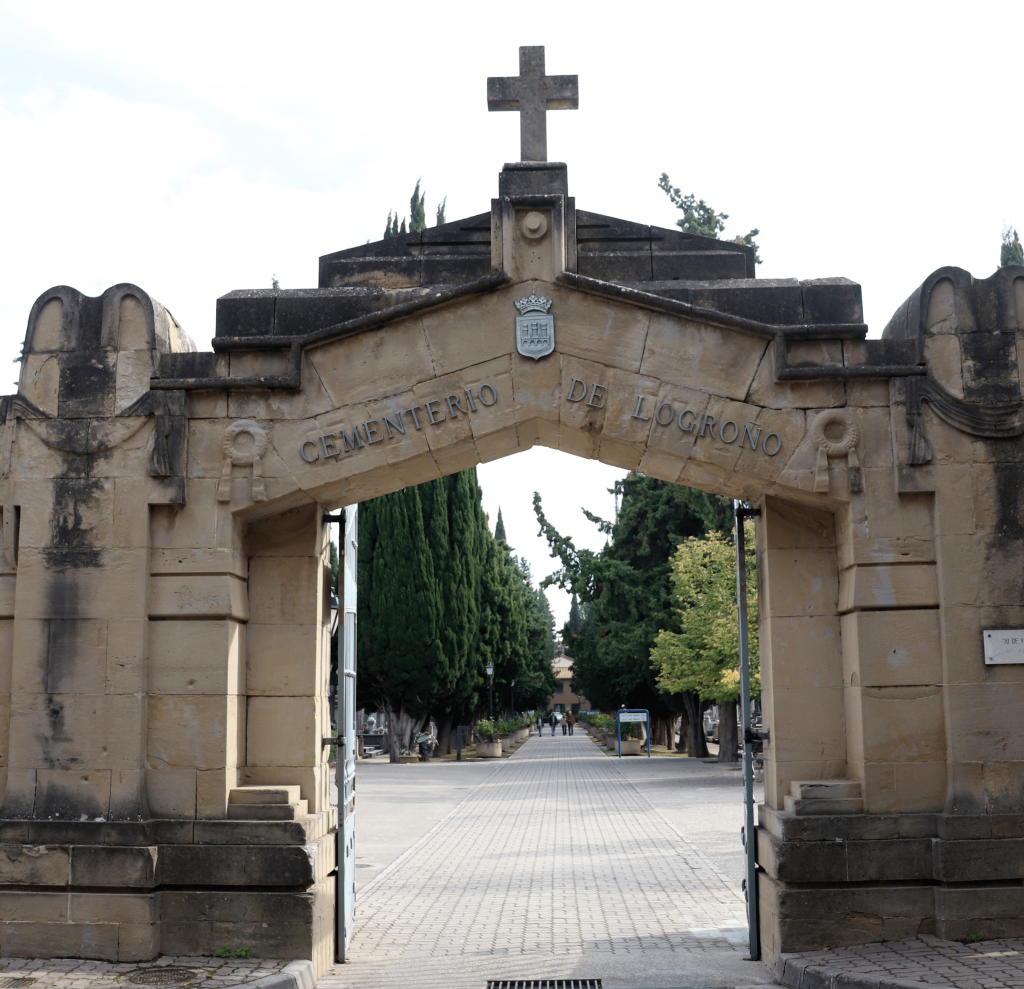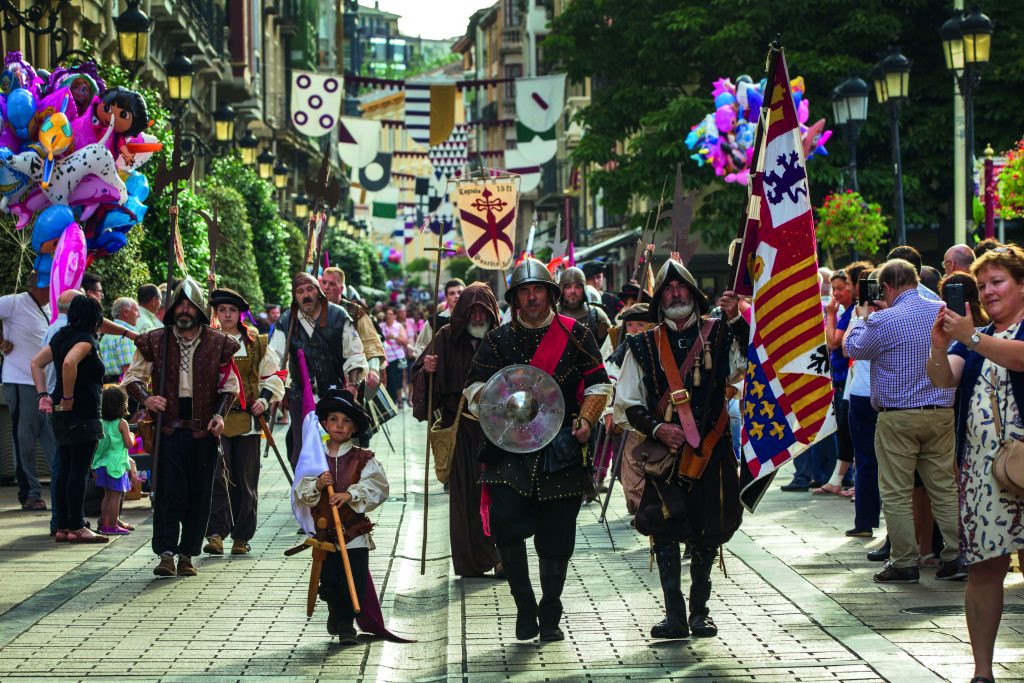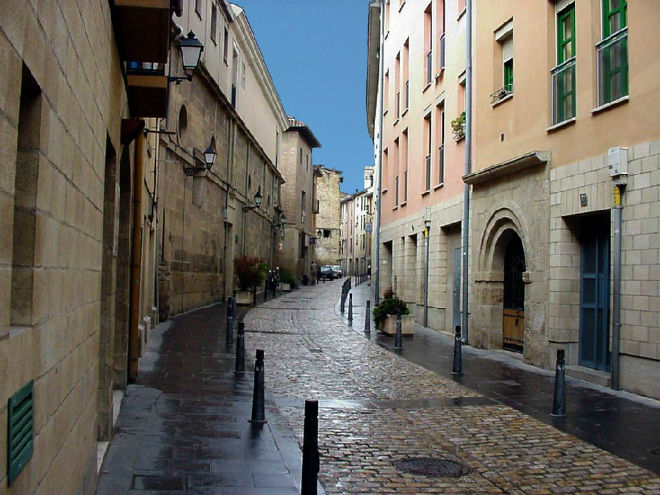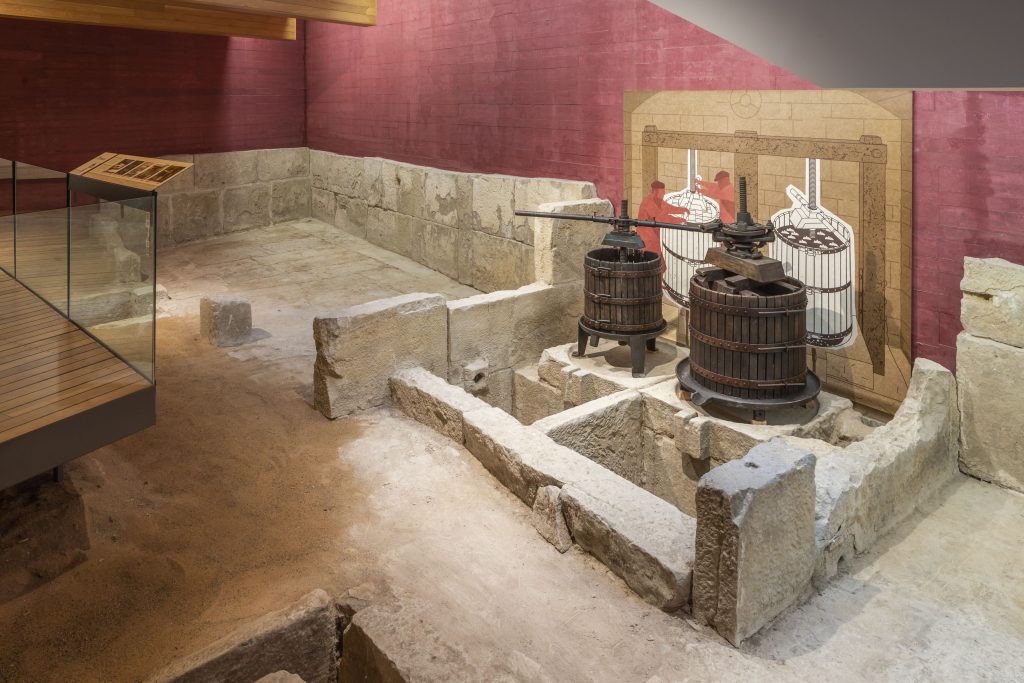To discover a city you also need to know the history of the people who lived there. Whether they are famous or not so famous, they are all part of its past, which is why it would be unfair to forget them and not visit the Logroño cemetery, an open-air museum that allows us to better understand some parts of the history of the capital of La Rioja.
There are many types of tourism –gastronomic, cultural, adventure, business– but there is one that usually goes unnoticed. That is necrotourism, which focuses on visiting the place where the city’s historical personalities rest, i.e. the cemeteries.
Beyond Père-Lachaise, the Parisian cemetery where Oscar Wilde, Jim Morrison and Marcel Proust are buried or the Acattolico in Rome, where the tombstones of Antonio Gramsci and the poets John Keats and Percy Bysshe Shelley rest, travellers arriving in a city do not usually think of visiting its cemetery.
That was before, because 21st century tourists don’t just visit the city, its churches or museums, they want more, and that’s why necrotourism is now a trend.
Logroño is no exception, and its civil cemetery is full of names without which the city would not be what it is today. But the site isn’t just interesting because of the exploits of those who rest there.
It is also an open-air sculpture museum. Just look at the tomb of Fernando Gallego Herrera, popularly known as “el Ruso”, an eccentric engineer from Salamanca who designed his own mausoleum fusing elements of Gaudí’s architecture, Egyptian culture and Mudejar art.
Eight metres high, his unique coffin serves as a record of the indescribable personality of a man who travelled all over the world and was involved in projects as important as the Aswan Dam and the Panama Canal, playing a leading role in its modernisation.
Gallego’s tomb is not, however, the only element of undeniable artistic value. Nearby is the pantheon of the Cadarso del Pueyo family, the work of the sculptor Daniel García, who came to Logroño with the sole intention of sculpting the angel with the icy gaze that presides over the building.
Of outstanding sculptural merit are also the statues by Vicente Ochoa, commissioned to decorate the tombs of the Blanco Ramos and Rico Peña families.
But if there is one work that stands out for its elegance and delicacy, it is that of Félix Reyes, who, through a melancholy statue equipped with a paintbrush and a palette, manages to draw our attention to an inscription through which the painter and poet Segundo Arce –buried there– is able to recover his voice and recite a few last verses: “Rows of cypress trees / point out the paths to follow; / there is sun in the air / and a longing for life… / Death has not triumphed; / Life is born here.”
Less hopeful is the message left by the Marquises of Romeral, whose pantheon is inscribed with the following sentence: “I was what you are now and you will be what I am now.”
Even so, you shouldn’t be discouraged and although nothing will save us from the common destiny that unites us all, it is important to take advantage of what remains of this convent to learn new things, a task that is not particularly difficult if, phone in hand, you walk through the streets of the cemetery looking for details about the lives of illustrious characters such as the politicians Vicente Toledo and Amós Salvador, the military man Martín Zurbano, Doctor Zubía or Salustiano Orive, better known as “Don Salustiano”, the proud inventor of Licor del Polo.






